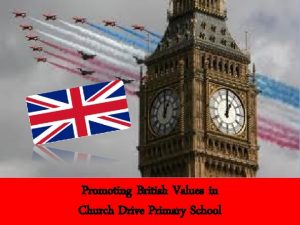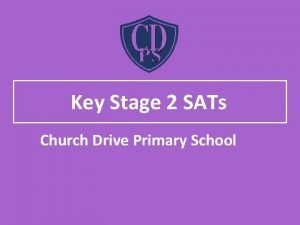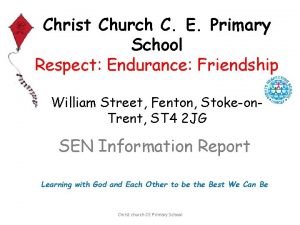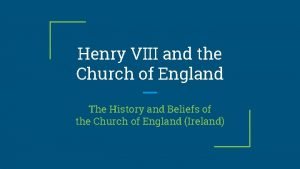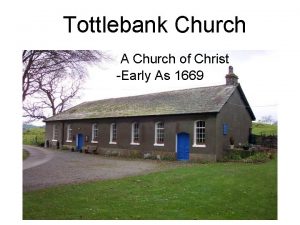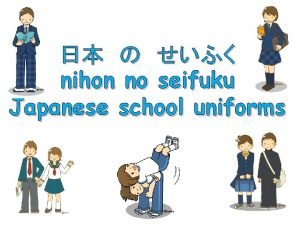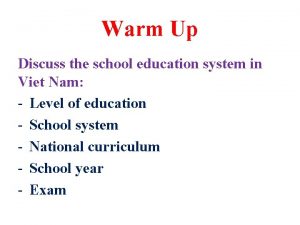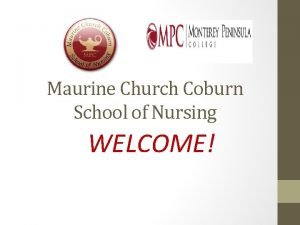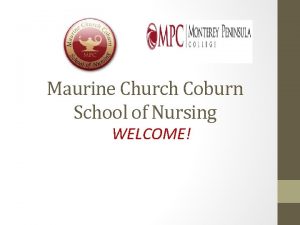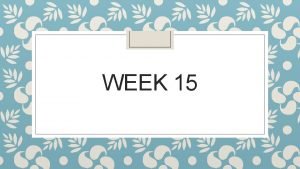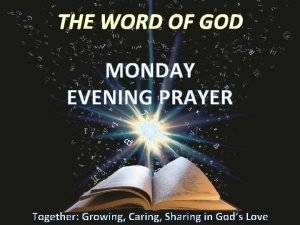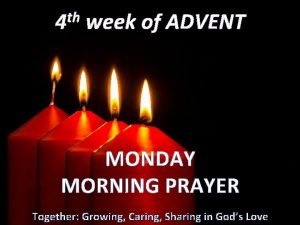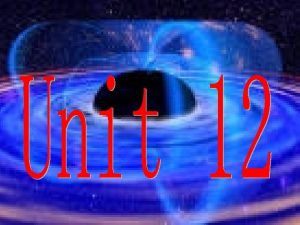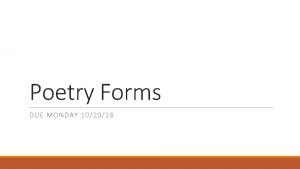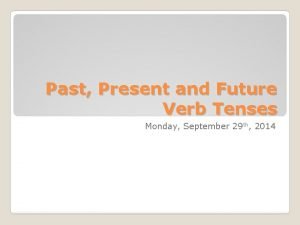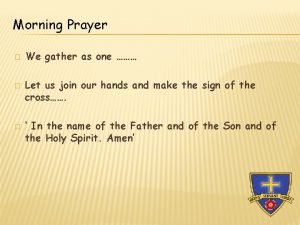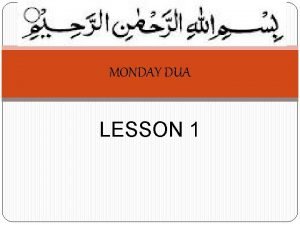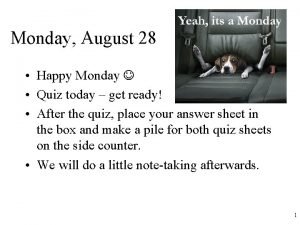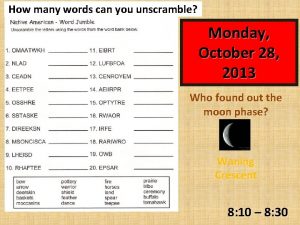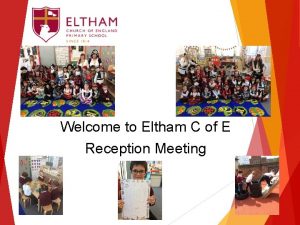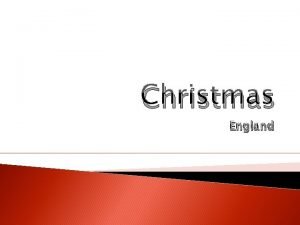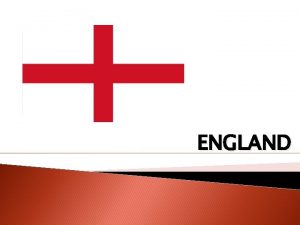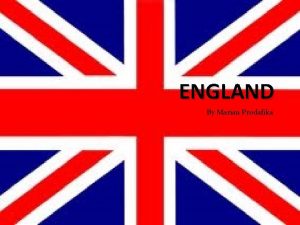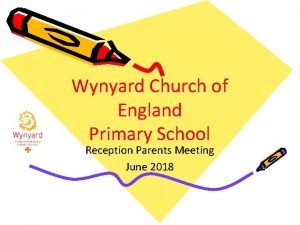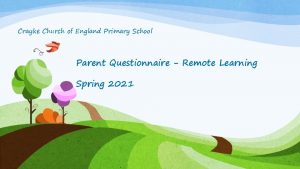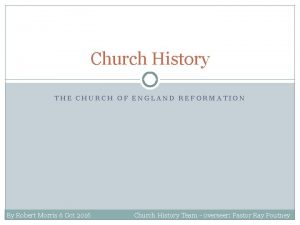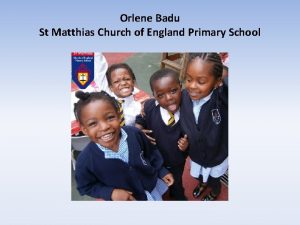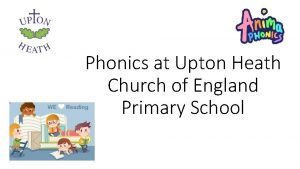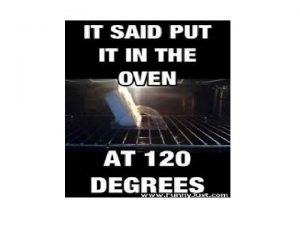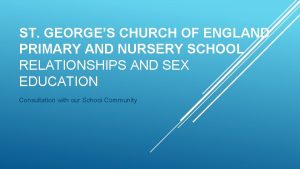Eltham Church of England Primary School Monday 17























- Slides: 23

Eltham Church of England Primary School Monday 17 th September 2018 Welcome to the Year 2 SATs meeting

What does SATs stand for? • Statutory Assessment Tasks and Tests (also includes Teacher Assessment). • SATs are taken at the end of Key Stage 1 and at the end of Key Stage 2.

What are KS 1 SATs? • KS 1 SAT tests are taken by pupils in year 2 (when they are 6 -7 years old) as part of the National Curriculum assessment programme. • Year 2 pupils undertake KS 1 SAT papers in two core subjects: English and Maths. • The papers are marked internally. On your child’s end of year report it will state whether they achieved the ‘Year 2 standard’ or are ‘working towards the standard’ based on a combination of the SATs and teacher assessment. Should you wish to request your child’s specific test score you will need to ask your child’s class teacher.

Aims of the meeting To share important information about KS 1 SATs To answer questions about KS 1 SATs Discuss and share ideas about how you can help your child at home

SATs Timetable KS 1 SATS will take place in May over a period of three weeks. They are time tabled to ensure that the children can complete the assessments in smaller groups with familiar adults to make sure that they feel at ease. Children are often unaware they’ve even taken their SATs! Unfortunately we are unable to tell you exactly which day your child will be taking the assessment.

English SATs consist of: • A reading test comprised of two parts. • A grammar, punctuation and spelling test (non-statutory)

English Comprehension • There are two reading comprehension papers. • The first should take approximately 30 minutes, while the second should take approximately 40 minutes. • The tests don’t have to be completed within one sitting. Some children can complete them in multiple sittings if it’s deemed that they will perform better after a break.

English Comprehension The second paper is slightly longer and is seen as the more challenging of the two papers. Throughout the test, the children will be required to retrieve information, explain the meaning of words found in the text and make inferences. Some children can find the volume of text and the complexity of the vocabulary challenging. We will, of course, be working to support the children over the year to increase their fluency and widen their vocabulary. Please support by reading regularly with your child at home.

Example of KS 1 reading questions Vocabulary formed a LARGE part of last year’s papers. The knowledge of the vocabulary and the ability to gain meaning of unknown words from the context was tested thoroughly.

English, grammar, punctuation & spelling • The test will assess grammar, punctuation, spelling & vocabulary.

example Write the missing punctuation mark to complete the sentence below. Can you play my favourite tune What type of word is underlined in the sentence below? Poppy held the baby rabbit gently in her arms. Tick one. an adjective an adverb a noun a verb

How can parents help with reading? • Ensure your child reads every night. • Encourage them to read fiction and non-fiction. • Try to listen to your child read and ask them questions about the text. • Help them with the different skills of reading especially ‘skim’ reading where they are looking for key words in the text. • Test knowledge of vocabulary – what does that word mean? • Speed reading.

Assessment of writing • Pupils’ work is assessed across the year and teaching is targeted towards the improvement of the pupil’s individual writing. • We use a student-friendly version of the Teacher Assessment Framework (TAF ) to improve our writing and this has informed the student learning ladders in the front of English books. • Internal moderation takes place and Local Authority moderators visit schools to ensure high standards of teacher assessment.

Mathematics SATs consist of: Two Maths Paper 1 – Arithmetic Paper 2– Reasoning Paper. Calculators are not permitted in any of the Maths tests.

Paper 1: An arithmetic paper. Questions will be context free. They will assess number, calculations and fractions. Pupils will be expected to use space in their test booklets to help them work out answers to harder questions. All questions in the test are worth 1 mark. The difficulty of the questions increases throughout the test. Timings for the test Paper 1: 20 - 30 minutes to answer 25 questions

Paper 1: Arithmetic sample questions 5+7= 54 – 6 = ½ of 20 = 20 + 30 + 10 = 35 ÷ 5 = + 7 = 20 6 x 3= - 3 = 12 It’s important to note that some questions require answers that are the beginning of the question.

Paper 2: Paper 2 assesses pupils’ problem solving and reasoning skills. The tests will contain a variety of questions. To respond to the questions the children may be asked to tick, circle, draw an arrow or write a short answer. Some questions will also require children to show or explain their working out. Children may be scored two marks for the correct answer and one for their working out. This test lasts for approximately 35 minutes. The questions will begin with a practice question, then 5 oral questions. Children can ask to have the questions read to them.

Paper 2 : Reasoning sample questions Sita puts 2 shoes in each of these boxes. How many shoes are there altogether?

Ben has 4 boxes of eggs. Mr Truman has 24 eggs. He uses 6 eggs to make a cake. He drops 11 eggs by mistake How many eggs are left? Show your working Write a number sentence using × and = to show that Ben has 24 eggs altogether. eggs (2 marks)

http: //www. satspapers. org. uk/Page. aspx? TId=4

How can parents help with Maths? § § Support with homework – use the example page in the CGP books to help your child complete their weekly maths homework. TIMES TABLES!!! Help your child to check their work through – this will help them to spot mistakes that can sometimes be easily fixed. Get your child to verbally explain to you how they will solve/have solved the problem.

Creative Curriculum Whilst we strive to ensure all Year 2 children are working towards the end of Year expectations and are confident to tackle the SATs assessments, we ensure that this does not impact on the children’s enjoyment and experience of a broad and balanced curriculum. � Many maths activities are practical including maths related games and songs. The children produce lots of creative writing including comic strips, leaflets and poetry. There are plenty of opportunities for role play and drama. � In the afternoon, the children take part in a Creative Curriculum covering Geography, History, Art/DT and Music. We also have a number of themed weeks! � The second half of the Autumn Term we will be looking at Antarctica through art and design. �

Thank you for coming. Any questions?
 Church drive primary school
Church drive primary school Church drive primary school homework
Church drive primary school homework Christ church primary school fenton
Christ church primary school fenton Church of england beliefs
Church of england beliefs Tottlebank church of christ in england
Tottlebank church of christ in england Japanese male school uniforms
Japanese male school uniforms Unit 4 school education system
Unit 4 school education system The primary pigments are _____ the primary colors.
The primary pigments are _____ the primary colors. Mpc nursing
Mpc nursing Maurine haver
Maurine haver Monday tuesday wednesday thursday friday calendar
Monday tuesday wednesday thursday friday calendar Welcome back monday
Welcome back monday Monday is my favourite day
Monday is my favourite day What do you do last weekend
What do you do last weekend Monday evening prayer
Monday evening prayer Monday morning prayer images
Monday morning prayer images Art and music are my favorite subject
Art and music are my favorite subject Poem for kids
Poem for kids Past tense of on monday
Past tense of on monday Monday prayer for work
Monday prayer for work Monday dua
Monday dua Happy monday quiz
Happy monday quiz Monday.ocm
Monday.ocm Monday unscramble
Monday unscramble
